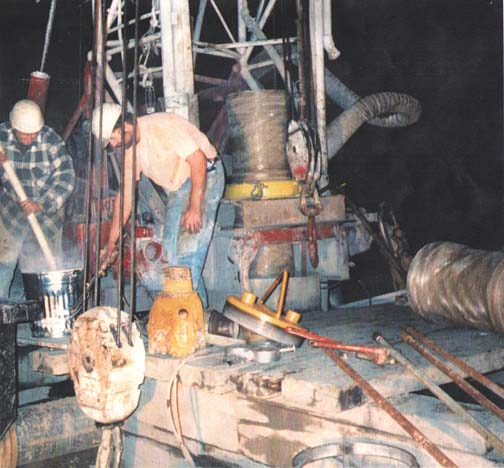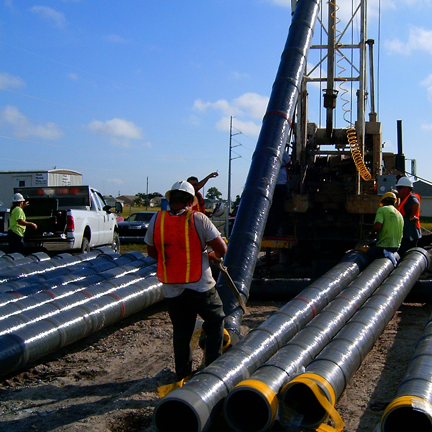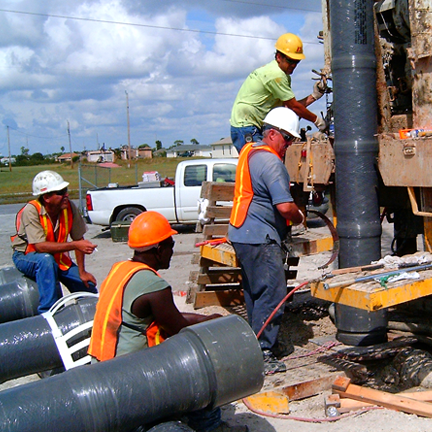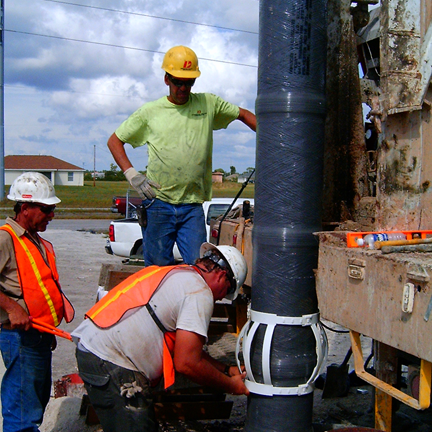Burgess Projects Summary
Project
City of Cape Coral
Expansion of RO Treatment Plants
Well Pipe Issues and Resolution
As early as the 1970’s, Cape Coral, Florida, was looking to expand its water resources. State controlled fresh water supplies were clearly not sufficient to support the City’s rapid population growth. Cape Coral decided to embrace Reverse Osmosis (RO) technology that was fairly new at the time – it decided to drill down to the Floridian Aquifer and desalinate its brackish water. The City decided to create its own potable water.
The first production wells and RO treatment plant went into operation in 1976. An expansion was implemented in 1985. The City went through a number of changes to its treatment plants over the years, and when it expanded its facilities in 2004, the City was clear about the obstacles it faced with well components, particularly well casing and drop pipes.
Major issues included:
• Corrosion
• Strength/Pressure Resistance
• Heat Resistance
• Installation
• Cost Containment
The City awarded MWH Engineers the contract for the design and construction of the expansion. Diversified Drilling, Inc. was chosen to install the new wells. 22 production wells were installed in the North Cape RO Water Treatment Plant, and 8 in the Southwest RO Water Treatment Plant.

History and Resolution
Corrosion
Corrosion caused by the high salt content of water in the aquifer was a major issue. Gordon Kennedy, MWH’s Project Manager, cited the inert nature of Fiberglass as a major reason for selecting Burgess Fiberglass Casing for the project. As an inert material, Fiberglass is not subject to chemical attack and does not corrode from contact with brackish water. Further, Burgess had a track record with the City. Burgess Casing had been successfully installed in the City’s RO treatment plants since the 1970’s.
As an inert material, Fiberglass is also low residue forming. This property protects the sensitive membrane systems which are an integral part of the RO system. Residues from metal pipe can clog and damage filters and membranes.
Additionally, early installations of stainless steel drop pipe had to be removed due to damage from iron-eating bacteria. PVC drop pipe was installed next, but problems with water hammer forced its removal. Installation of Burgess Fiberglass Column Pipe solved these issues.
Strength/Pressure Resistance
Kennedy also cited the superior strength of Fiberglass Casing as a reason for its selection. The strength-to-weight ratio surpasses that of iron, carbon and stainless steel. The great compressive strength of Fiberglass Casing enables its installation to well depths that crumple PVC pipe. The strength of Fiberglass also withstands the weight of cement poured at installation.
The superior strength of Fiberglass Column (Drop Pipe) also withstands the start-up torque created by high horsepower pumps.
Heat Resistance
Ralph D’Lea, of Diversified Drilling, cited the pressure and heat resistance of Burgess Casing as important criterion for selection. High pressure capabilities and heat resistance allow for faster and more cost effective installation of casing. “It takes fewer shots of cement to install Burgess Fiberglass Casing because it resists pressure and heat” he stated.
Unlike PVC pipe, Burgess Fiberglass Casing will not crumple due to the heat of hydration. (This negates the need to circulate cool water in PVC pipe during installation.)
D’Lea has supported the City’s treatment plants for eight years. During the first two years he pulled pumps from the bottom of wells fairly often due to hour glassing. Valve failure heated the water and collapsed PVC drop pipe. The installation of Burgess Fiberglass drop pipes and installation of safety devices (flow shut-off, etc.) resolved this issue.
Installation
In addition to the ability to more quickly grout fiberglass casing, Kennedy and D’Lea also pointed out other installation advantages. The smooth nature of metal requires welding “cat eyes” or lugs onto the pipe, in order for it to be lifted by elevators. Additionally, each metal joint must be welded together by skilled welders – and the metal is extremely heavy to handle. These are expensive, time consuming obstacles.
Conversely, elevators attach easily under the female bell end of Burgess Fiberglass Casing. Joints are aligned, threaded and bonded together quickly – without special skills. Fiberglass is lighter and easier to handle than metal. Prep time and installation time are significantly reduced using Burgess Fiberglass Casing.
Cost Containment
An additional benefit outlined by MWH’s Kennedy is the low cost of Fiberglass. Kennedy stated “Burgess Fiberglass is cheaper in the long-term when compared to other types of pipe.”
The cost of installation is also another important factor. As outlined in the Installation section, above, installation of metal is time and labor intensive. Welders are highly skilled and the extra cost of men and drilling rigs is prohibitive when compared to installing lightweight, threaded Fiberglass Casing.
Finally, the long service life of Fiberglass (40 years at the City) contributes to cost containment. Removing and re-installing Casing and Drop Pipe is extremely expensive.
Solution
Burgess Fiberglass Casing was installed in all 30 of the City’s new RO production wells. For these wells, 12” Fiberglass Casing was installed and pressure grouted from the bottom. Fiberglass Drop Pipe was also installed in the production wells. Casing was connected to Stainless Steel Fittings running to the plant. This portion of the City’s water treatment plant expansion was completed in 2010.



